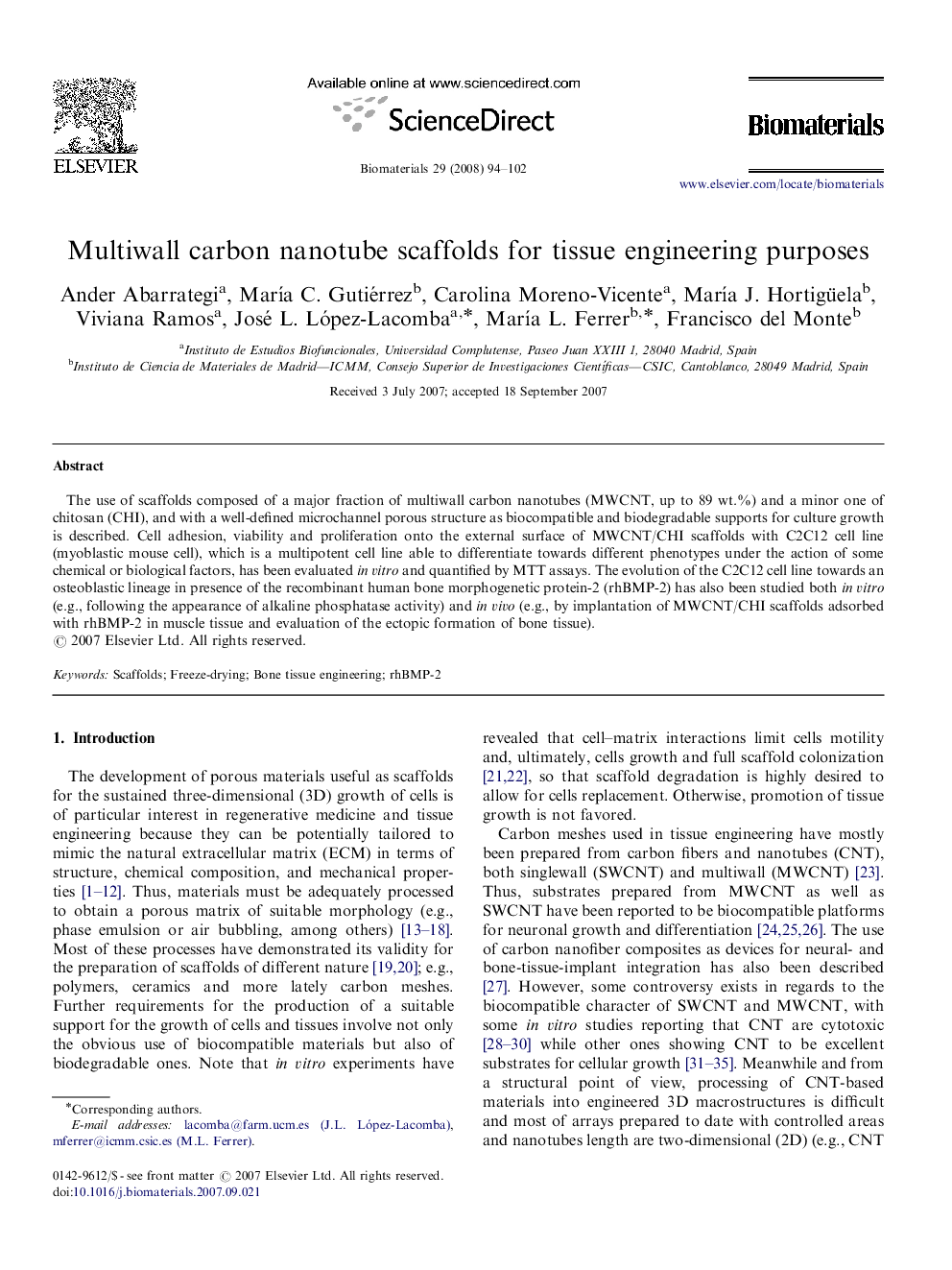| Article ID | Journal | Published Year | Pages | File Type |
|---|---|---|---|---|
| 10190 | Biomaterials | 2008 | 9 Pages |
The use of scaffolds composed of a major fraction of multiwall carbon nanotubes (MWCNT, up to 89 wt.%) and a minor one of chitosan (CHI), and with a well-defined microchannel porous structure as biocompatible and biodegradable supports for culture growth is described. Cell adhesion, viability and proliferation onto the external surface of MWCNT/CHI scaffolds with C2C12 cell line (myoblastic mouse cell), which is a multipotent cell line able to differentiate towards different phenotypes under the action of some chemical or biological factors, has been evaluated in vitro and quantified by MTT assays. The evolution of the C2C12 cell line towards an osteoblastic lineage in presence of the recombinant human bone morphogenetic protein-2 (rhBMP-2) has also been studied both in vitro (e.g., following the appearance of alkaline phosphatase activity) and in vivo (e.g., by implantation of MWCNT/CHI scaffolds adsorbed with rhBMP-2 in muscle tissue and evaluation of the ectopic formation of bone tissue).
